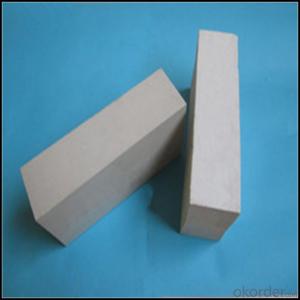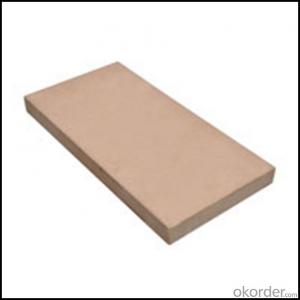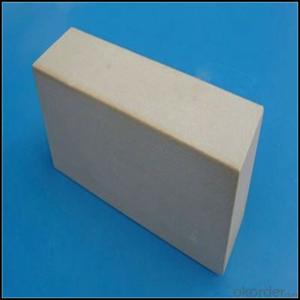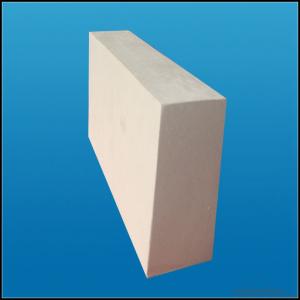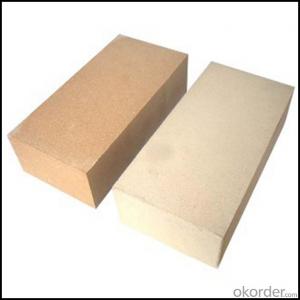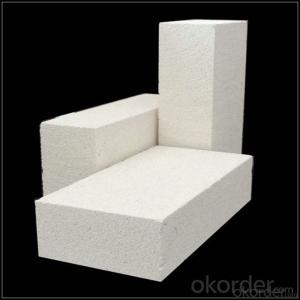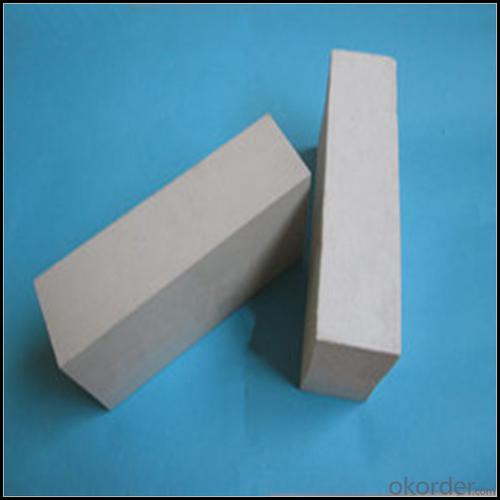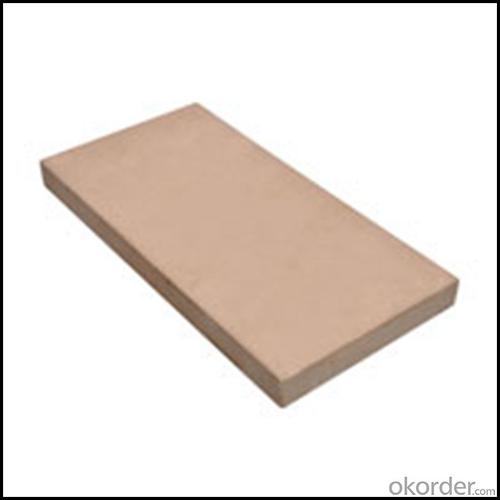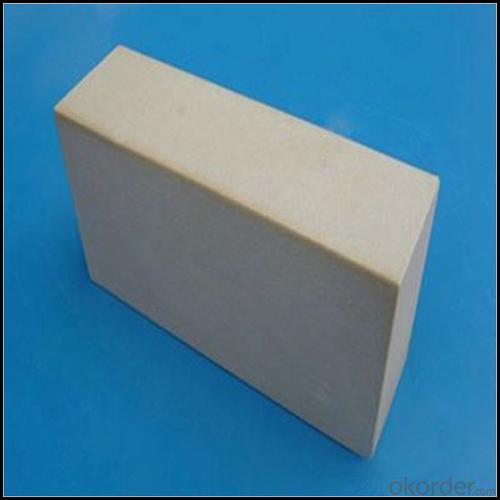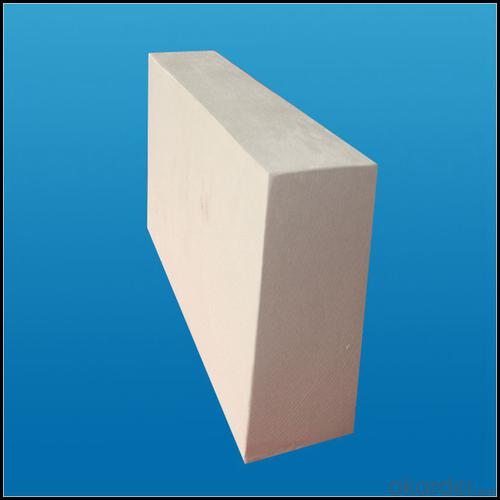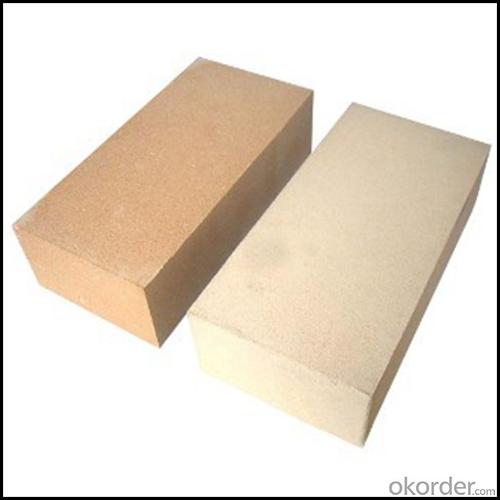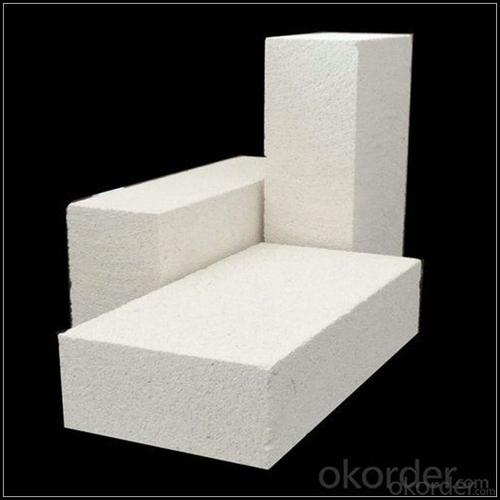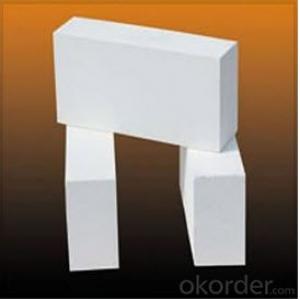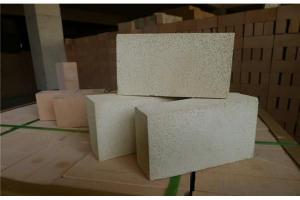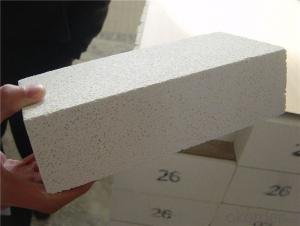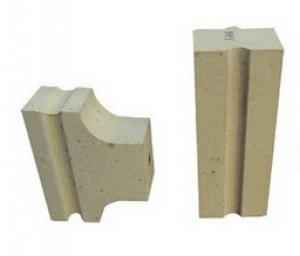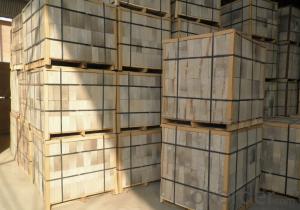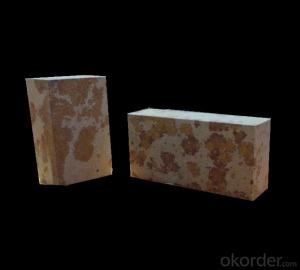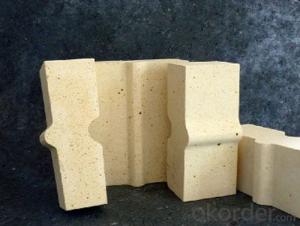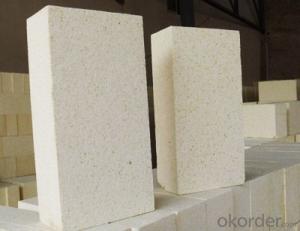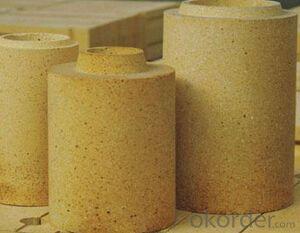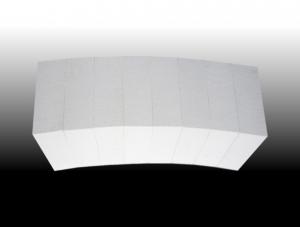Insulating Fire Brick - Lightweight Silica Refractory Brick for Hot Blast Furnace
- Loading Port:
- China main port
- Payment Terms:
- TT OR LC
- Min Order Qty:
- 0.01
- Supply Capability:
- 2000 m.t/month
OKorder Service Pledge
OKorder Financial Service
You Might Also Like
Refractory Brick
Refractory brick can be divided into three process: Raw material, molding, burning.Generally, refractory brick was molded by dry pressing. By means of mixing the material uniformity in proportion and aging mixture some time. Then, pour some powders into the module and dry pressing. After dry pressing, the adobe need to pushed in the drying kiln to stoving or stay in the air to drying. This progress will need about 3-5 days. After this progress, then push the adobe into the tunnel furnace or shuttle kiln to burning around 1300C. This progress will be need about 5-7 days.
After burning, the brick will be packed in pallet and leave the factory.
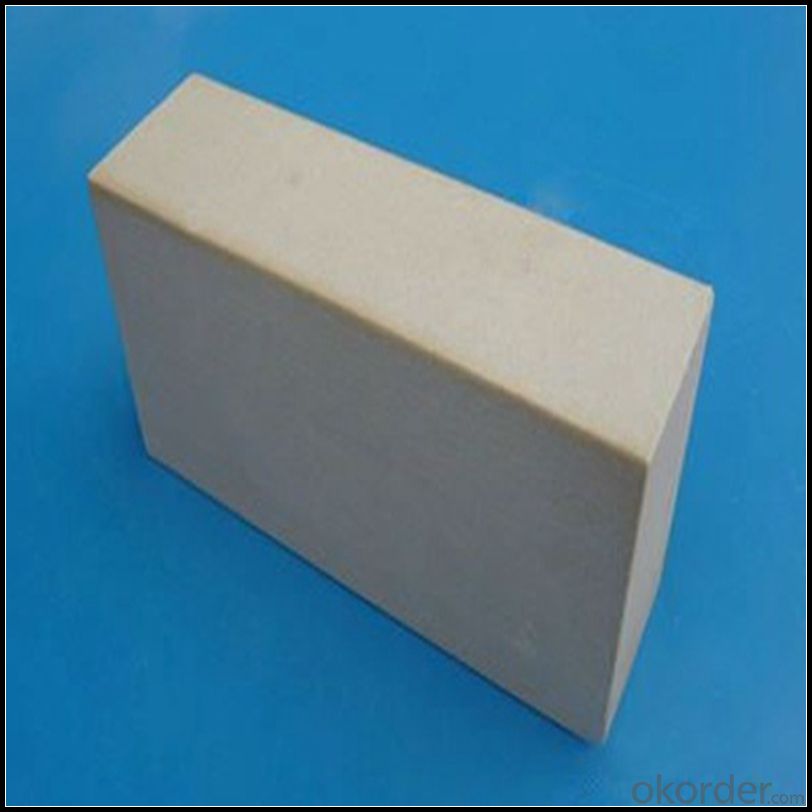
Features
1.High refractoriness,
2.High-temperature endurable.
3.Good corrosion resistance.
4.Good spalling resistance and wear resistance.
5.Good thermal shock resistance.
6.High mechanical strength.
7.High-temperature creep rate is low.
8.Good volume stability at high temperature.
Application
1. For ladle and tundish.
2. High erosion resistance
3. Good performance.
4. Long service life.
5. Good mechanical strength and high refractoriness.
Data Sheet
Classification Temperature (℉/℃) | 3000/1650 |
Bulk Density (g/cm3 ) | ≤1.0 |
Thermal Conductivity | |
800℃, W/m.K | ≤0.39 |
1000℃, W/m.K | ≤0.43 |
1200℃, W/m.K | ≤0.48 |
Reheating Linear Change (%) | 1550℃×12h |
≤0.9 | |
Chemical Composition (%) | |
Al2O3 | ≥75 |
Fe2O3 | ≤0.5 |
Packaging & Shipping
Packaging Details:Be packed in fumigated wooden pallets
Delivery Detail: 30 days after order

Our Services
Optimum solution and product supply of refractories for high temperature industries, such as iron steel, non-ferrous, petrochemical and building materials.
Engineering design, contract and consult for refractories, and civil architecture design.
Research, development, manufacture and sale of superhard materials.
R&D, manufacture and sale of special packing materials for export.
Inspection, supervision and arbitration of refractories.
Consultation and services in refractories information.
Training and cultivation of high-level talents in refractories profession
Sales Network

Company Information
CNBM (China National Building Material) Group is the largest comprehensive building materials group in China that in integrate scientific research, manufacturing and logistics into one entity. The largest building materials and equipment specialists in China. Upon State Council approval, today CNBM owned more than 300 subordinate manufacturing factories and servicing companies. There are 6 fully owned public listed companies and 11 partially owned with substantial shares public listed companies. In many of these fields, CNBM is playing the leading role in the building industry in the country.
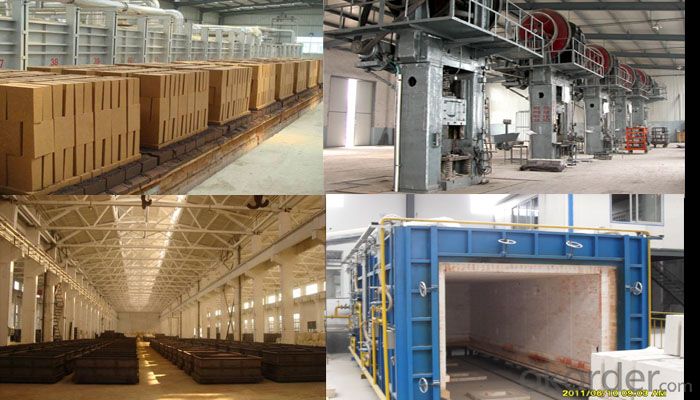
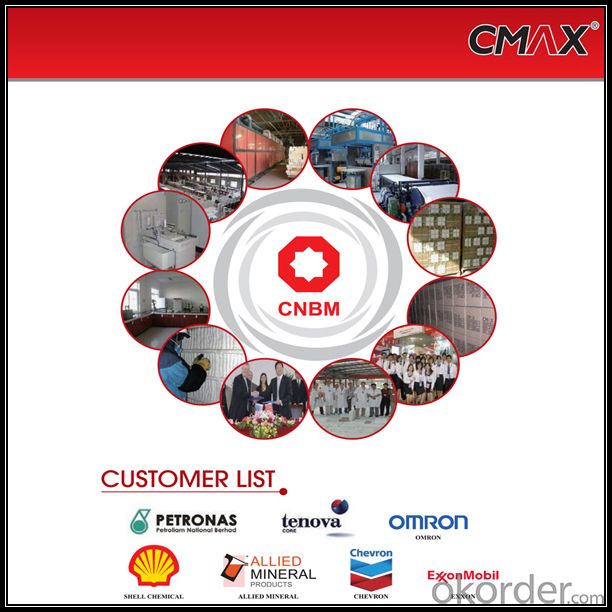
FAQ
1. Which products do you have?
We have all kinds of refractory brick, castable, mortar, cement, ceramic fiber products, etc.
Or you could browse our products to choose what you need.
2. Can you give me a brief introduction of the application of your products?
We are mainly specializing in the refractory materials in iron and steel, cement, glass, ceramics, petrochemical, electric power Industry, etc.
3. If I need your offer, what information do you need?
In order to choose suitable products, it will be appreciated to provide us the information, such us specification, technical data, order quantity, products application etc. If any question, please contact us freely.
- Q: Can insulating fire bricks be used in the construction of ovens or kilns for pottery?
- Yes, insulating fire bricks can be used in the construction of ovens or kilns for pottery. Insulating fire bricks are specifically designed to withstand high temperatures and provide excellent insulation properties. They have a low thermal conductivity, which means they can effectively retain heat and prevent heat loss, making them ideal for creating and maintaining high temperatures required in pottery ovens or kilns. Additionally, insulating fire bricks have good resistance to thermal shock, meaning they can withstand rapid temperature changes without cracking or breaking. This makes them a reliable choice for constructing ovens or kilns that need to undergo frequent heating and cooling cycles. Overall, insulating fire bricks are a popular choice in pottery oven or kiln construction due to their thermal insulation properties and durability.
- Q: Can insulating fire bricks be used in sewage treatment plants?
- Yes, insulating fire bricks can be used in sewage treatment plants. Insulating fire bricks are designed to have excellent thermal insulation properties, which make them suitable for high-temperature applications. In sewage treatment plants, there are often processes that involve the use of heat, such as anaerobic digestion or sludge incineration. Insulating fire bricks can be used to line the walls, floors, and roofs of the incinerators or digesters, helping to retain the heat generated and improve energy efficiency. Additionally, sewage treatment plants often deal with corrosive and abrasive environments due to the presence of chemicals, acids, and solids in the wastewater. Insulating fire bricks are made from high-quality refractory materials that are resistant to chemical attack and erosion. This makes them a suitable choice for lining tanks, pipes, or other equipment that may come into contact with corrosive substances. Furthermore, insulating fire bricks are lightweight, which makes them easier to handle and install compared to other types of refractory materials. This can be beneficial in sewage treatment plants where there might be a need for frequent maintenance or repairs. Overall, insulating fire bricks are a versatile and durable option for use in sewage treatment plants, providing excellent thermal insulation, resistance to corrosive environments, and ease of installation.
- Q: Can insulating fire bricks be used in cryogenic applications?
- Yes, insulating fire bricks can be used in cryogenic applications. These bricks have low thermal conductivity and are capable of withstanding extremely low temperatures, making them suitable for insulation in cryogenic environments.
- Q: Are insulating fire bricks lightweight or heavy?
- Insulating fire bricks possess a lightweight quality, a result of their deliberate design to exhibit high insulation and low density. Their composition primarily consists of lightweight materials like expanded clay, perlite, and vermiculite, which further enhance their weightlessness. Consequently, these bricks prove to be more manageable and easier to install when compared to conventional heavy fire bricks. Nonetheless, insulating fire bricks manage to maintain exceptional thermal insulation capabilities, rendering them well-suited for a range of applications, such as kilns, furnaces, and fireplaces.
- Q: Can insulating fire bricks be used for insulation in furnaces?
- Yes, insulating fire bricks can be used for insulation in furnaces. Insulating fire bricks are made from lightweight materials such as clay and minerals, which have excellent thermal insulation properties. They are designed to withstand high temperatures, making them suitable for use in furnaces. These bricks help to reduce heat loss and improve energy efficiency by preventing the escape of heat from the furnace. Additionally, insulating fire bricks can also help to protect the outer structure of the furnace from excessive heat, thereby extending its lifespan. Overall, insulating fire bricks are a reliable and effective choice for insulation in furnaces.
- Q: Do insulating fire bricks have a high insulating capacity?
- Yes, insulating fire bricks have a high insulating capacity. These bricks are designed to have low thermal conductivity, which helps in reducing heat transfer and maintaining high temperatures in industrial applications such as furnaces and kilns. They provide excellent insulation, making them highly effective in conserving energy and reducing heat loss.
- Q: Can insulating fire bricks be used in residential construction?
- Insulating fire bricks, also known as refractory bricks, are primarily designed for use in high-temperature applications such as industrial furnaces and kilns. They are specifically engineered to withstand extreme heat, have low thermal conductivity, and provide excellent insulation properties. While insulating fire bricks can be used in residential construction, they are not typically the go-to choice for such applications due to several reasons. Firstly, insulating fire bricks are significantly more expensive compared to other types of construction materials available in the market. This cost factor often makes them less desirable for residential projects, where budget considerations are crucial. Secondly, the primary purpose of insulating fire bricks is to provide thermal insulation in high-temperature environments. In residential construction, the need for such extreme insulation is relatively rare. Standard construction materials like concrete blocks, bricks, or insulation boards can usually provide adequate insulation for residential buildings. Lastly, insulating fire bricks are not as structurally strong as other construction materials, which may make them less suitable for load-bearing applications in residential construction. These bricks are typically used as a secondary layer or lining in industrial furnaces, rather than as a primary building material. In conclusion, while insulating fire bricks can technically be used in residential construction, they are not commonly employed due to their high cost, limited applicability, and structural limitations. Residential construction typically relies on more cost-effective and versatile materials to meet insulation and structural requirements.
- Q: How do insulating fire bricks affect the overall weight of a structure?
- Insulating fire bricks are lightweight materials specifically designed for their low density and high thermal insulation properties. As a result, when used in a structure, they contribute to reducing the overall weight of the construction. This is advantageous as it helps to minimize the load on the foundation and other structural elements while maintaining the required insulation and heat resistance.
- Q: Can insulating fire bricks be used for chimney lining?
- Yes, insulating fire bricks can be used for chimney lining. Insulating fire bricks are designed to withstand high temperatures and are excellent for insulating chimneys, providing thermal protection and enhancing energy efficiency.
- Q: Are insulating fire bricks resistant to sulfates?
- Yes, insulating fire bricks are generally resistant to sulfates. They are designed to withstand high temperatures and are made from materials such as alumina and silica, which are known to have good chemical resistance. However, it is recommended to check the specific product specifications or consult with the manufacturer to ensure their suitability for sulfates in your specific application.
Send your message to us
Insulating Fire Brick - Lightweight Silica Refractory Brick for Hot Blast Furnace
- Loading Port:
- China main port
- Payment Terms:
- TT OR LC
- Min Order Qty:
- 0.01
- Supply Capability:
- 2000 m.t/month
OKorder Service Pledge
OKorder Financial Service
Similar products
Hot products
Hot Searches
Related keywords
